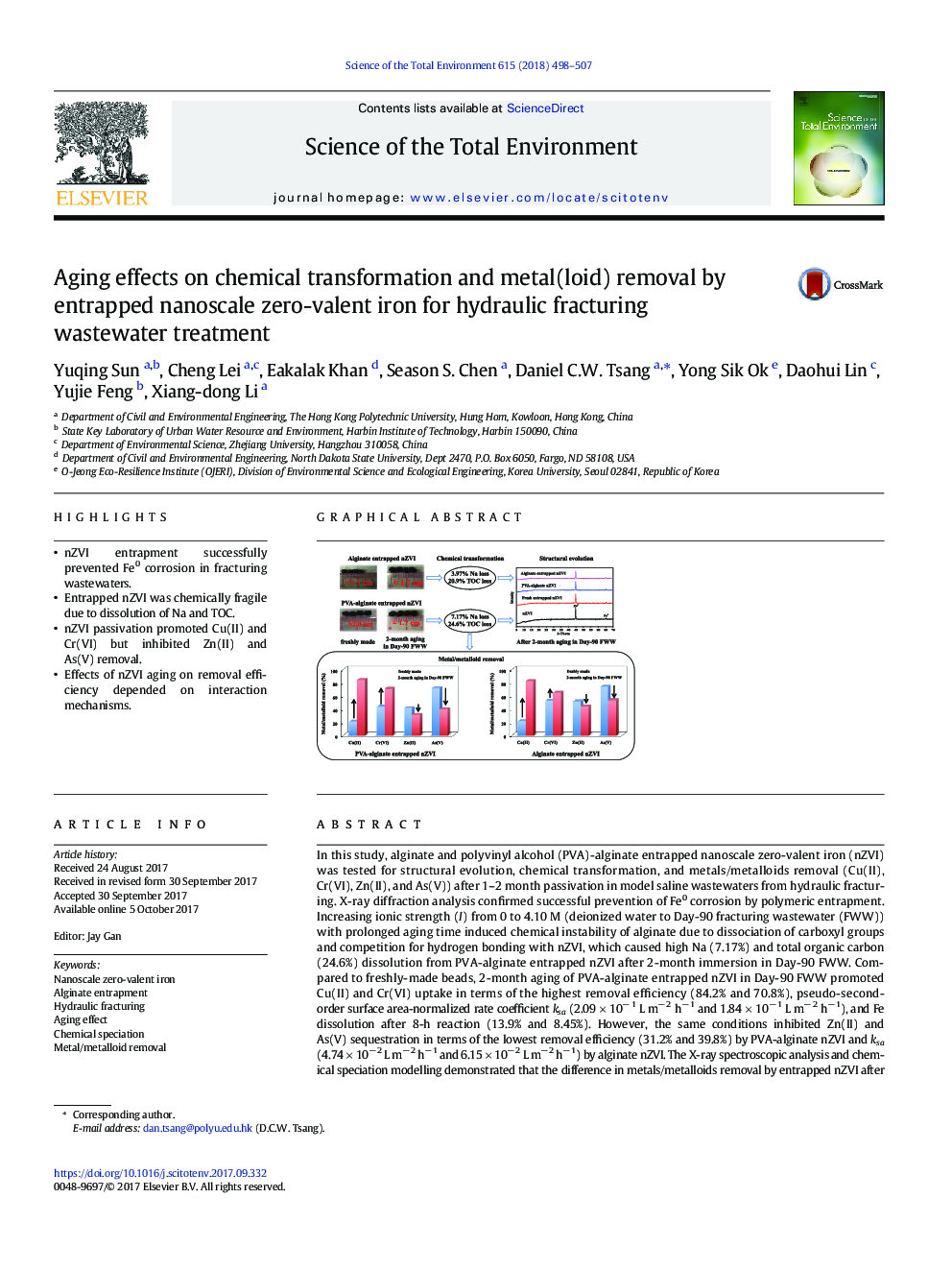| کد مقاله | کد نشریه | سال انتشار | مقاله انگلیسی | نسخه تمام متن |
|---|---|---|---|---|
| 5749805 | 1619689 | 2018 | 10 صفحه PDF | دانلود رایگان |
- nZVI entrapment successfully prevented Fe0 corrosion in fracturing wastewaters.
- Entrapped nZVI was chemically fragile due to dissolution of Na and TOC.
- nZVI passivation promoted Cu(II) and Cr(VI) but inhibited Zn(II) and As(V) removal.
- Effects of nZVI aging on removal efficiency depended on interaction mechanisms.
In this study, alginate and polyvinyl alcohol (PVA)-alginate entrapped nanoscale zero-valent iron (nZVI) was tested for structural evolution, chemical transformation, and metals/metalloids removal (Cu(II), Cr(VI), Zn(II), and As(V)) after 1-2 month passivation in model saline wastewaters from hydraulic fracturing. X-ray diffraction analysis confirmed successful prevention of Fe0 corrosion by polymeric entrapment. Increasing ionic strength (I) from 0 to 4.10 M (deionized water to Day-90 fracturing wastewater (FWW)) with prolonged aging time induced chemical instability of alginate due to dissociation of carboxyl groups and competition for hydrogen bonding with nZVI, which caused high Na (7.17%) and total organic carbon (24.6%) dissolution from PVA-alginate entrapped nZVI after 2-month immersion in Day-90 FWW. Compared to freshly-made beads, 2-month aging of PVA-alginate entrapped nZVI in Day-90 FWW promoted Cu(II) and Cr(VI) uptake in terms of the highest removal efficiency (84.2% and 70.8%), pseudo-second-order surface area-normalized rate coefficient ksa (2.09 Ã 10â 1 L mâ 2 hâ 1 and 1.84 Ã 10â 1 L mâ 2 hâ 1), and Fe dissolution after 8-h reaction (13.9% and 8.45%). However, the same conditions inhibited Zn(II) and As(V) sequestration in terms of the lowest removal efficiency (31.2% and 39.8%) by PVA-alginate nZVI and ksa (4.74 Ã 10â 2 L mâ 2 hâ 1 and 6.15 Ã 10â 2 L mâ 2 hâ 1) by alginate nZVI. The X-ray spectroscopic analysis and chemical speciation modelling demonstrated that the difference in metals/metalloids removal by entrapped nZVI after aging was attributed to distinctive removal mechanisms: (i) enhanced Cu(II) and Cr(VI) removal by nZVI reduction with accelerated electron transfer after pronounced dissolution of non-conductive polymeric immobilization matrix; (ii) suppressed Zn(II) and As(V) removal by nZVI adsorption due to restrained mass transfer after blockage of surface-active micropores. Entrapped nZVI was chemically fragile and should be properly stored and regularly replaced for good performance.
197
Journal: Science of The Total Environment - Volume 615, 15 February 2018, Pages 498-507
